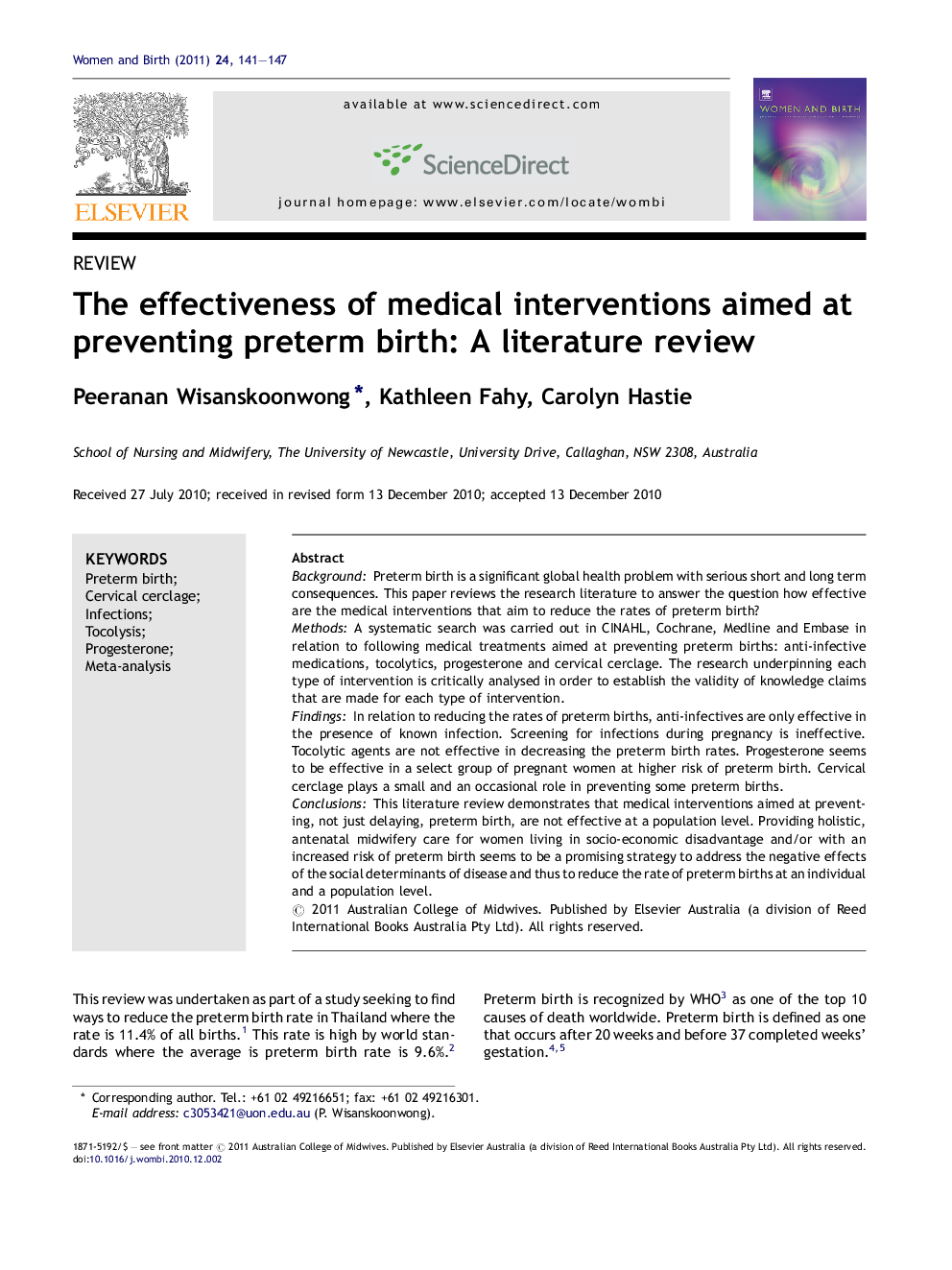| Article ID | Journal | Published Year | Pages | File Type |
|---|---|---|---|---|
| 2636780 | Women and Birth | 2011 | 7 Pages |
BackgroundPreterm birth is a significant global health problem with serious short and long term consequences. This paper reviews the research literature to answer the question how effective are the medical interventions that aim to reduce the rates of preterm birth?MethodsA systematic search was carried out in CINAHL, Cochrane, Medline and Embase in relation to following medical treatments aimed at preventing preterm births: anti-infective medications, tocolytics, progesterone and cervical cerclage. The research underpinning each type of intervention is critically analysed in order to establish the validity of knowledge claims that are made for each type of intervention.FindingsIn relation to reducing the rates of preterm births, anti-infectives are only effective in the presence of known infection. Screening for infections during pregnancy is ineffective. Tocolytic agents are not effective in decreasing the preterm birth rates. Progesterone seems to be effective in a select group of pregnant women at higher risk of preterm birth. Cervical cerclage plays a small and an occasional role in preventing some preterm births.ConclusionsThis literature review demonstrates that medical interventions aimed at preventing, not just delaying, preterm birth, are not effective at a population level. Providing holistic, antenatal midwifery care for women living in socio-economic disadvantage and/or with an increased risk of preterm birth seems to be a promising strategy to address the negative effects of the social determinants of disease and thus to reduce the rate of preterm births at an individual and a population level.
